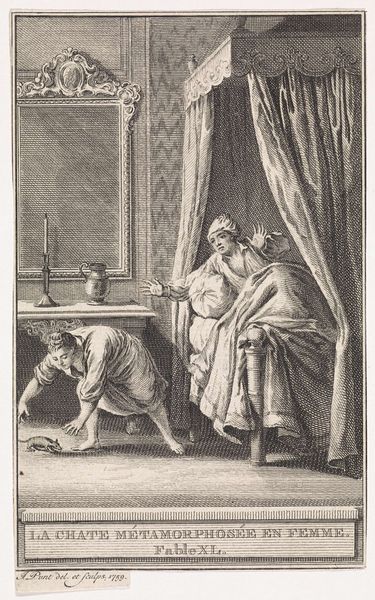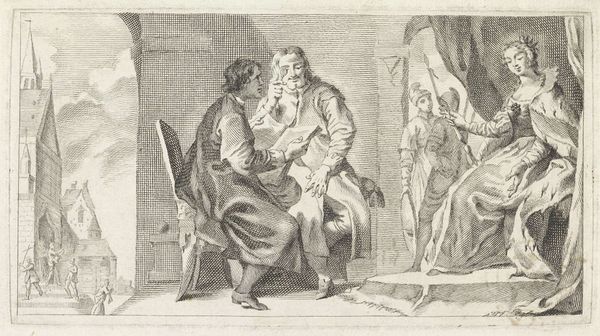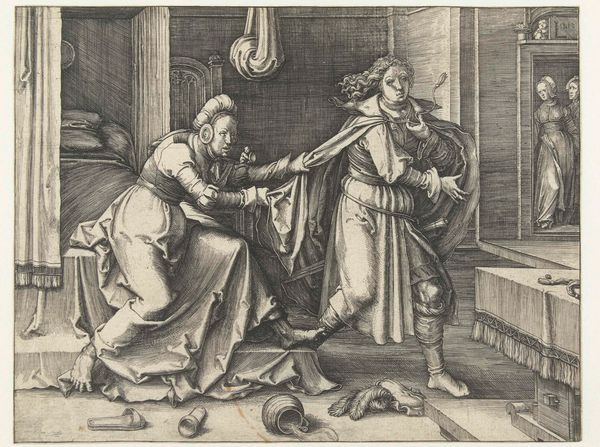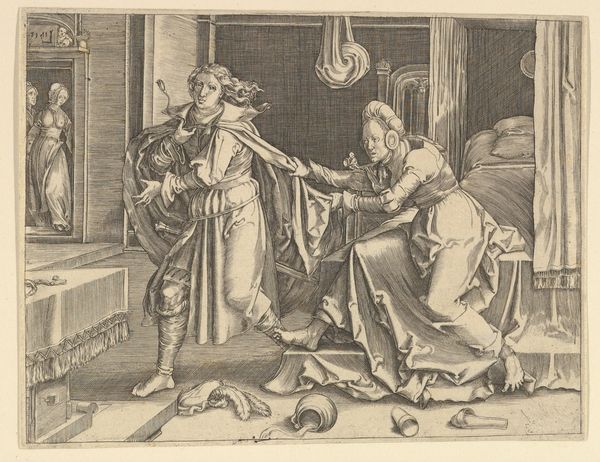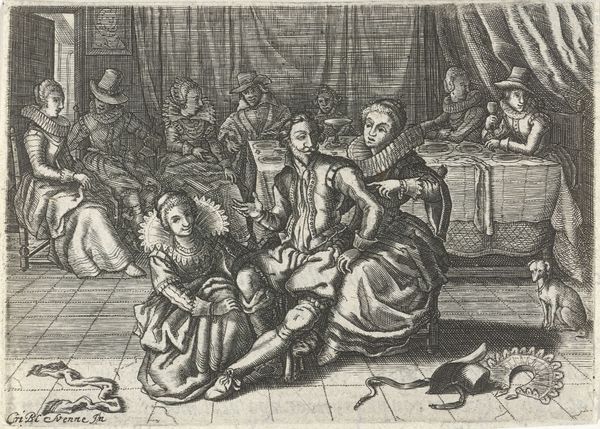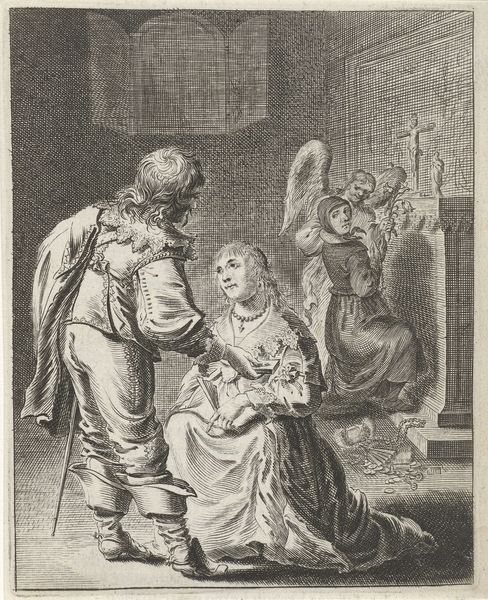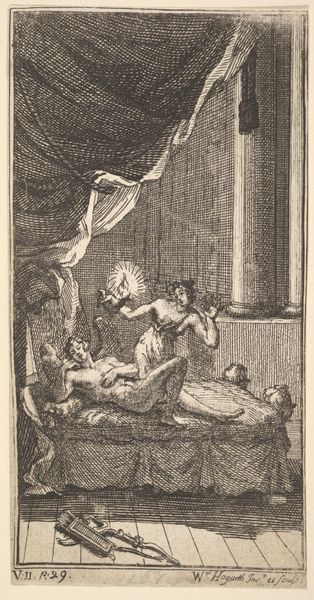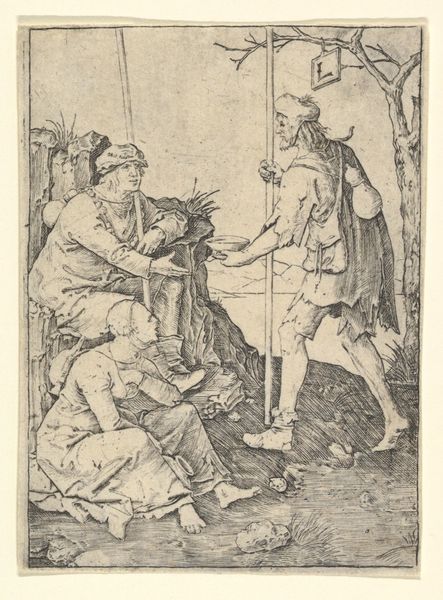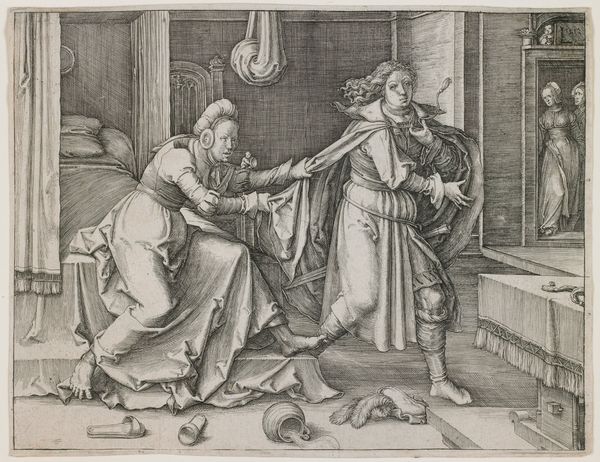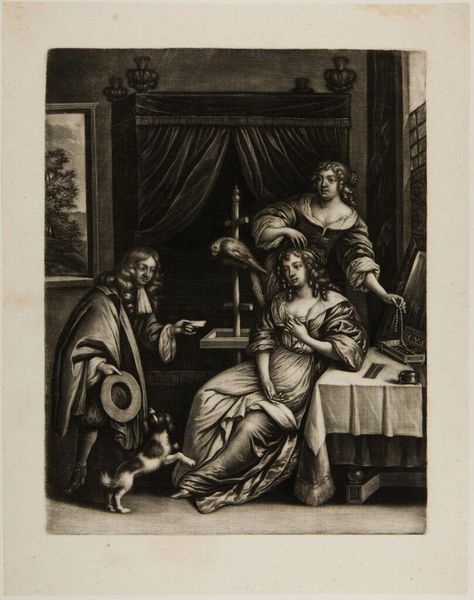
print, engraving
#
narrative-art
#
baroque
# print
#
charcoal drawing
#
figuration
#
history-painting
#
charcoal
#
engraving
Dimensions: height 160 mm, width 220 mm
Copyright: Rijks Museum: Open Domain
Curator: I’m struck immediately by the rather gothic mood evoked by this image. The intense chiaroscuro seems to almost overwhelm the scene. Editor: Yes, it’s a dramatic presentation. Here we have Magdalena van de Passe’s engraving, "Pygmalion falling in love with his statue," made sometime between 1617 and 1634. It is now held here at the Rijksmuseum. What’s interesting is the way she engages with the classical myth, presenting Pygmalion's obsession in a very visually arresting way. Curator: Obsession is the word! Notice the almost grotesque features of the figure on the left, she seems to beckon the sculpture to life, further intensifying the moment with frantic gesticulation. This feels more like witnessing a necromantic ritual than a simple expression of love. Editor: Precisely. That figure likely represents divine intervention, a symbol of the gods answering Pygmalion's prayers. It emphasizes the power dynamics at play—Pygmalion, the male artist, is granted life by a superior, often patriarchal force. And that the statue itself seems so very passive, vulnerable, arguably embodies the historical subjugation of women in art. Pygmalion essentially wills this ideal woman into existence. It raises many questions about desire and creation. Curator: And what of the symbols embedded in the scene? Pygmalion's tools scattered on the floor speak to his artistic labor, but they also suggest a world momentarily abandoned in favor of miraculous creation. Even the laurel wreath crowning the statue can be seen not only as an attribute of triumph, but also an attribute to Apollo, connecting the statue's animation to that of divine creation, or poetic invention. Editor: And note the group of figures in the back, that also seem to be sculpted; Van de Passe shows us Pygmalion's past, his other creations now forever in the shadow of his "perfect" women. This tells us much about the male gaze and objectification. Curator: Indeed, Van de Passe gives us more than just a story of love; she gives us a concentrated study of desire and transformation rendered through careful, almost feverish line work. It certainly stays with you. Editor: Absolutely. And by looking critically at the story behind it we can apply lessons learned here about identity, gender, and artistic creation in a whole host of contemporary contexts.
Comments
No comments
Be the first to comment and join the conversation on the ultimate creative platform.
